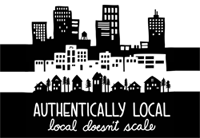This is part of the essay “Ravenna Park (Seattle)“, appearing here thanks to HistoryLink.org and author Peter Blecha, under a Creative Commons license.
[If you’re new to the series, you can start with Part 1 here.]
A Public Park
Though the pretty little creek would never be the same — today’s version is but a ghost of its former self — the park would henceforth be a public amenity open to all. The city moved ahead with additional changes to the area. In 1913 it constructed the steel Ravenna Park Bridge — just across from the Beck’s home — on 20th Avenue NE. “The structure is 354 feet long. It has a 250-foot arch composed of two ribs (curved structural members that support a curved shape or panel) that rise 41 feet over the ravine, and support an 18-foot reinforced concrete roadway” (Long). In time, as the automobile era dawned, 20th Avenue NE became a notorious racing strip for University of Washington fraternity brothers (and Roosevelt High School kids) and that narrow bridge portion must have added to the thrills.
After Theodore Roosevelt’s death in January 1919, the city attempted to rename the place Roosevelt Park, but in 1931 a public petition forced them to revert to its original name. Meanwhile, the old Cowen Park Bridge was finally upgraded to a new reinforced concrete one in 1936. (Decades later, and after years of engineering tests, the Ravenna Bridge’s porous concrete was determined to be crumbling and today [2011] it is strictly reserved for pedestrian crossings.)
No longer running his park, Beck continued selling real estate — by 1916 he had a new downtown office (505 Fisher Studio building). But then around 1921 he returned to preaching, taking the position of pastor at the Interbay Presbyterian Church (3236 16th Avenue W). The Reverend and his wife were living near downtown (at 306 1519 3rd Avenue) by 1923, but by 1928 Louise was listed in the Polk Directory as back living near Ravenna (2128 NE Park Road). That same year Louise Beck passed away and was buried at Mount Pleasant Cemetery. A few years later her widower was listed as residing in Room 202, Olympic Place. William Beck stuck around until at least 1946.
Next week: Drying It Up, and Cutting It Down
______________________
Sources:
W. W. Beck, Ravenna Park – ‘Im Walde,’ (1903), Peter Blecha collection, Seattle; W. W. Beck, Ravenna Park – ‘Im Walde,’ 16-page postcard booklet, undated, in Peter Blecha collection; W. W. Beck, Ravenna Park (ca. 1909), Peter Blecha collection; “Ravenna Park Guide,†brochure, 1909, Peter Blecha collection; “Ravenna Or Big Tree Park: It is Famous = “Nature’s Exposition,†postcard, 1909, Peter Blecha collection; Harvey Manning, Winter Walks and Hikes (Seattle: Mountaineers Books, 2002), 42; Betty McDonald, Anybody Can Do Anything (Philadelphia / New York: J. B. Lippincott Co, 1950), 129-130; Paula Becker, “Time Traveling The Roosevelt District With Betty Macdonald,†Seattlepress.com website accessed July 13, 2010 (http://seattlepress.com/article-9455.html); “One of Ravenna’s Giant Trees Christened ‘Paderewski,’†Interlaken, February 8, 1908, p. 1; Sophie Frye Bass, When Seattle Was A Village (Seattle: Lowman & Hanford Co., 1947), 106-108: David Buerge, “Indian Lake Washington,†Seattle Weekly, August 1-7, 1984; Seattle Polk City Directory (1901-1934); Directory of the National Society of the Daughters of the American Revolution (Washington D.C.: Memorial Continental Hall, 1911), 1340; “Mrs. L. C. Beck Funeral To Be Held Today: Woman Widely Known In Musical and Club Circles Is Mourned By Seattle Friends,†Seattle Post-Intelligencer, July 9, 1928, p. 13; Kate C. Duncan 1001 Curious Things: Tales from Ye Olde Curiosity Shop (Seattle: University of Washington Press, 2000), 73-78; Andrea Casadio, email to Peter Blecha, January 30, 2008; “No Finer Site: The University of Washington’s Early Years On Union Bay,â€Â Web exhibition, University of Washington Libraries website accessed August 19, 2010 (http://lib.washington.edu/exhibits/site/); HistoryLink.org Online Encyclopedia of Washington State History, “Seattle’s Ravenna Park Bridge is constructed in 1913″ (by Priscilla Long), and “WPA builds Cowen Park Bridge in Seattle’s Ravenna neighborhood in 1936″ (by Priscilla Long), and “John Olmsted arrives in Seattle to design city parks on April 30, 1903″ (by David Williams and Walt Crowley), and “David Thomas Denny (1832-1903)†(by David Wilma), http://www.historylink.org/ (accessed August 1, 2010); Esther Campbell, Bagpipes in the Woodwind Section (Seattle: Seattle Symphony Women’s Association, 1978), 9; William Arnold, “The Great Mystery of Ravenna Park,†Seattle Post-Intelligencer, Northwest Today section, December 17, 1972, pp. 8-9; Steve Cronin, “Ravenna Park’s Famous Trees Vanished Furtively,†UW Daily, May 25, 1977, p. 3; James Bush, “Remembering William W. Beck: The Father of Ravenna Park,†The Seattle Sun, August 2003, The Seattle Sun website accessed August 25, 2010 (http://parkprojects.com/2003news/0308aug/hisbeck.html); Mary R. Watson, travel diary (handwritten), 1910, portion accessed on eBay, December 2006, copy in possession of Peter Blecha; Russ Hanbey, “1916 Seattle was a Hotbed of Sin When 2 Officers Were Killed,†The Seattle Times, February 6, 2010 (http://seattletimes.nwsource.com); and Peter Blecha archives.








Speak Your Mind